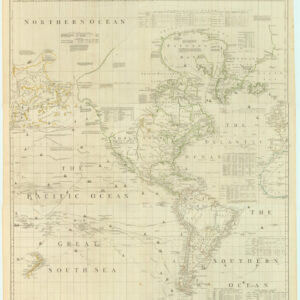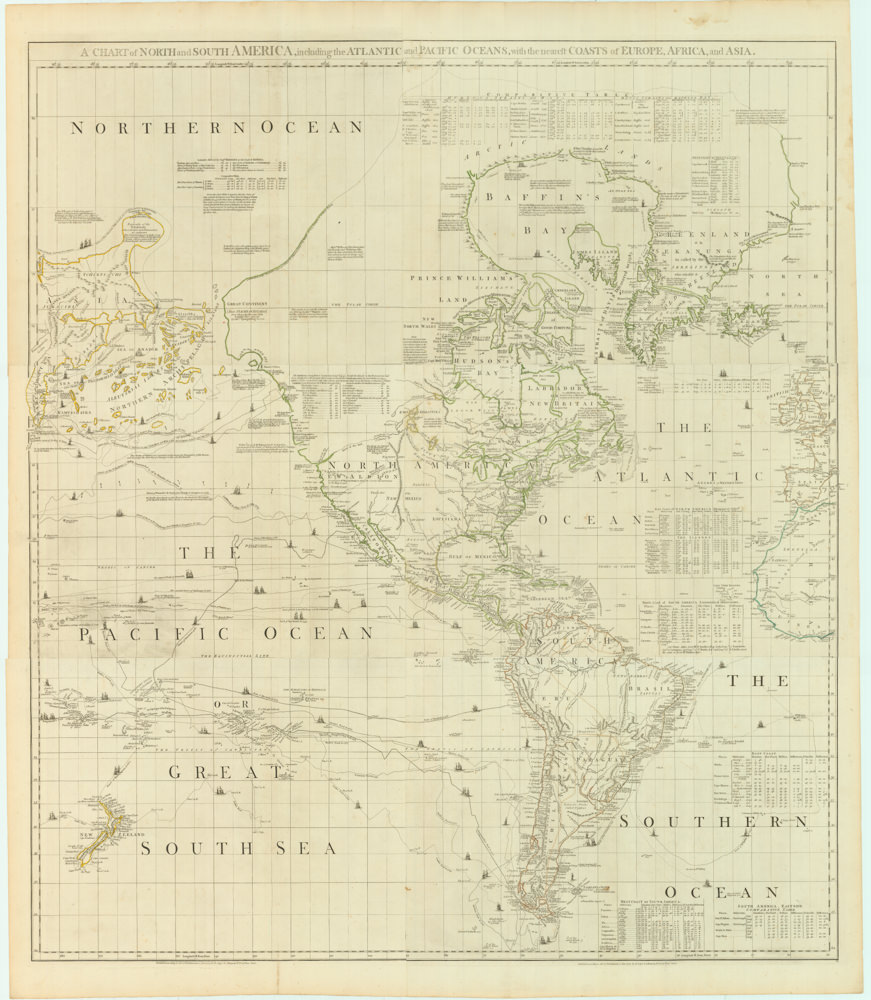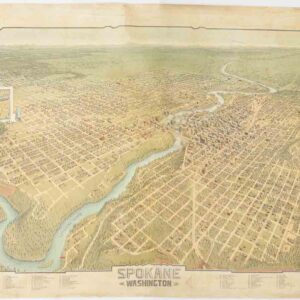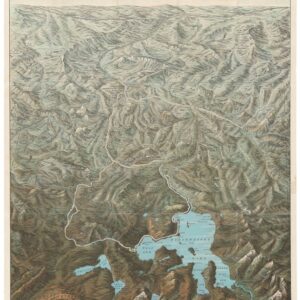The famous ‘Bogue Plan’ of Seattle: an ambitious urban design for the city and environs from 1911.
A Map for the City of Seattle and adjacent territory accompanying a report of MUNICIPAL PLANS COMMISSION.
Out of stock
Description
This wonderful map of Seattle and its environs represents the vision of prominent engineer Virgil G. Bogue. It is dated 1911 and the title informs that it was compiled as part of a report for the city’s Municipal Plans Commission. It is a large and highly graphic map, which captures the city mid-process in its evolution from an insignificant and distant port to the greatest maritime hub of the Northwest Pacific.
Having been produced as a consignment for the City’s Municipal Plans Commission, the map is forward-looking, including not only the extant street-grid, but also a whole range of proposed municipal projects, including: planned extensions of the street grid, luxurious waterfront developments, new steam railways and ferry routes, and more. The planned features are distinguished from the existing urban landscape by means of color coding (red, blue, and black ink), the key to which is provided in a legend in the lower left corner.
Districts like Beacon Hill, Capitol Hill, Queen Anne Hill, Rainer Heights, Georgetown, Ballard, Ravenna, Magnolia Bluff, and West Seattle are all recognizable and clearly labeled on the map. At the same time, it is evident just what an amazing amount of development has taken place in and around Seattle over the last hundred years. This is especially exemplified in the large number of proposed new piers and ferry routes, reflecting Seattle’s increasing focus on the waterfront. Some of the causes behind the city’s growth are discussed in the context section below. What is important to note here is that this map encapsulates Seattle’s dramatic evolution from isolated, sleepy port in the fringes of the nation to America’s maritime powerhouse in the Northwest Pacific.
As is indicated in the title, the map depicts more than just the city itself. In addition to all of Lake Washington and Mercer Island, Kirkland and Bellevue across the lake are shown in considerable detail. To the south, Renton is included, whereas in the north, the map extends all the way up to Richmond Beach.
Context is everything
Towards the end of the 19th century, the area around Seattle experienced an enormous population and development boom as a result of the Klondike Gold Rush. The city quickly became the last major continental transshipment hub before the Canadian border, and the spring-board for most Americans heading for the Yukon. Seattle was ideally suited: located securely in Puget Sound, it not only connected to Alaska and the rest of Pacific America, but also sustained stabile transport and trade routes across the ocean, to Asia.
Because of its great connectivity, Seattle soon became the most important transportation and shipping hub in this part of the country. The ubiquitous activity and significant quantities of gold being extracted from Alaska also meant that there was considerable wealth being generated here. In 1897, the steamer Portland arrived from Alaska with more than one million dollars in gold, and on her return north, she brought more new miners heading for Klondike. The wealth that was generated soon spilled over into other sectors as well, and entrepreneurial souls would set up new businesses all around town. Among its many successful industries was the production of clothes and equipment for miners and prospectors, as well as the distribution of salmon across the United States.
In 1909, the Alaska-Yukon-Pacific Exposition brought almost four million visitors to the city. This massive influx of people, attention, and money brought a new impetus to the city’s development. It was during this ‘second boom’ that our wonderful map was produced. This was a time in which Seattle shifted part of its investments and labor force into also becoming a hub for shipbuilding. When the Panama Canal opened in 1914, it changed the fates of many of America’s Pacific ports. Suddenly they were not just looking east anymore, but could envision a reach spanning the entire globe. With one stroke, this made Seattle much more valuable as an American port.
When the First World War began the same year, her value increased even further, in part due to Seattle’s distance from the fighting. The increased importance of Seattle as a major port soon meant that industries began developing on a large scale, changing the face of the city even further. The date of this map (1911) is, in other words, the perfect moment in time if one wanted to visualize some of the changes that Seattle has undergone this last century. It captures the city in all of its vivacious self-confidence and success, yet before the consequences off this success have fully unfolded in the landscape.
Cartographer(s):
Virgil Gay Bogue (1846–1916) was an American civil engineer who worked initially in his home state of New York before taking jobs internationally and in the western and northwestern United States. He primarily worked for railroads, though also became involved in city planning.
Condition Description
Excellent; bright color on clean paper that has been flattened linen-backed for preservation purposes.
References




